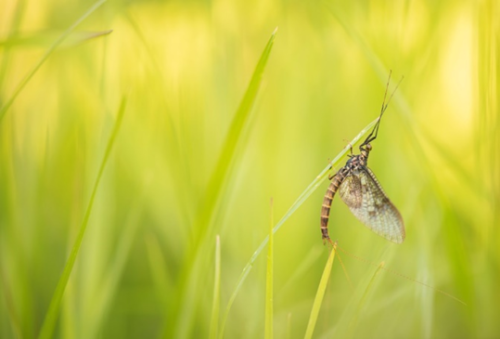Chemicals are just one pollutant threatening our freshwater ecosystems. Sewage, plastic, excess nutrients and waste from farmland all contribute to the dire state of our rivers. Environment Agency data from 2020 showed that all English rivers failed to meet overall quality tests for pollution. Not a single river achieved good chemical status, and only 14% of rivers in England achieved good ecological status.
Wildfish, RSPB, Buglife and the Pesticide Collaboration have published a report to illustrate the impact chemical pollution is having on our rivers. Below is an extract from a blog by Steph Morren, Senior Policy Officer at RSPB, who introduces the report and shares why prevention is better than cure for tackling chemical pollutants.
Wildfish have recently published their latest Riverfly Census results. This is a national survey covering 12 English rivers, monitoring aquatic invertebrates as a way to indicate what pressures our freshwater systems are under. Riverflies in particular are a vitally important part of the freshwater ecosystem, including in their role as food for birds, mammals and fish. Wildfish, RSPB, Buglife and the Pesticide Collaboration have published a report looking at some of this survey data in more detail.
Chemicals are just one pollutant threatening our freshwater ecosystems. Sewage, plastic, excess nutrients and waste from farmland all contribute to the dire state of our rivers. Environment Agency data from 2020 showed that all English rivers failed to meet overall quality tests for pollution. Not a single river achieved good chemical status, and only 14% of rivers in England achieved good ecological status.
Aquatic invertebrates spend most, if not all, of their lives in rivers. Over this time they are directly exposed to the conditions of the water, and often need good water quality to reach maturity. This makes them brilliant indicators of water quality, and so we can learn a lot about a river from how they are faring.
What did we find?
Using the Species At Risk (SPEAR) measure, analysis by WildFish showed clearly that in autumn, the number of rivers scoring ‘poor’ or ‘bad’ on the chemical stress scale was considerably greater in 2021 than in 2015, 2016 and 2017.
This strongly suggests the problem is getting worse. But the level of chemical stress on its own doesn’t tell us what is happening to biodiversity. A variety of species, rather than just a high number of individuals of one or two species, is what we’re looking for in a healthy system.
The Riverfly Census also looked at the number of caddisfly, mayfly and stonefly species present across all the sample sites per year. WildFish found that in both spring and autumn, 2021 had significantly fewer numbers of species than the previous survey years – showing that in addition to greater chemical stress being indicated, the diversity of key invertebrate species also appears to be decreasing.
The full version of Steph Morren’s blog can be read here and the report can be read here.
